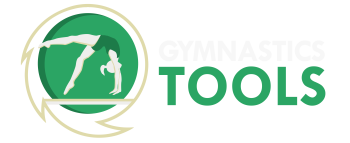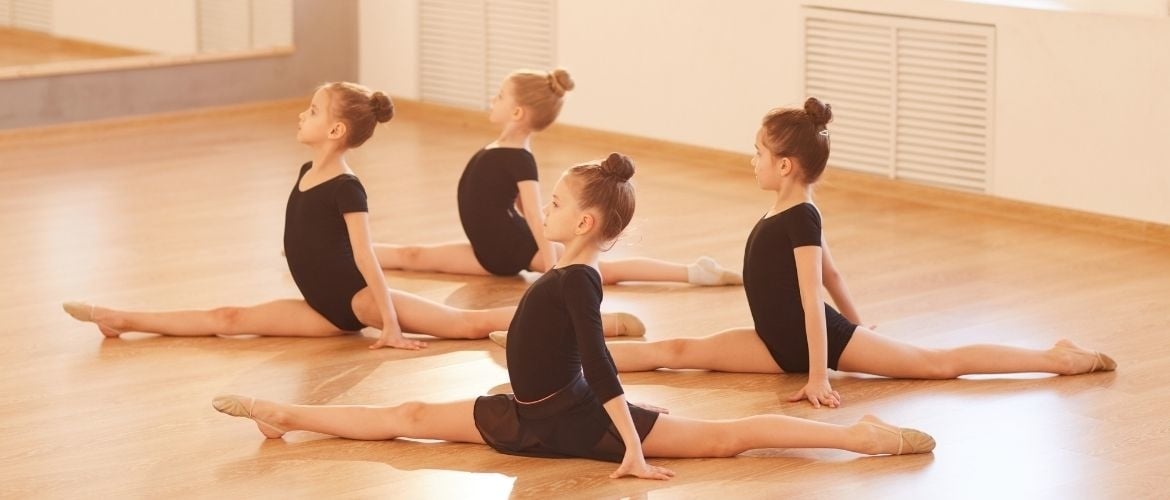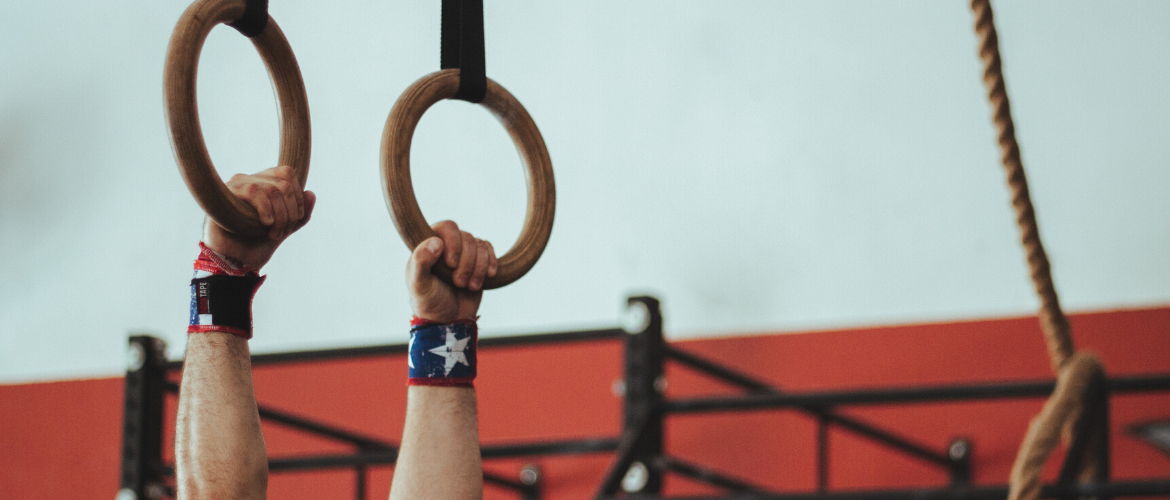Perhaps it is the most important element in gymnastics; the handstand. The foundation of gymnastics is mostly laid early on in most cases. The handstand recurs in many gymnastic elements. That is why it is important to learn it well so that the gymnast can perform it correctly and apply it in other elements. For example, think of a front handspring or giants on bars.
The seven phases of the handstand
Let’s first of all ,take a good look at the handstand. To make it easier, we will divide the handstand into seven phases:
- Starting position
- Outing
- Swinging up
- Binding
- Handstand
- Step back
- Final Posture
In all of these phases, it is important to perform gymnastics in lines. This you can achieve by practising gymnastics with space and the right form of tension.
First, we work out the linework for each phase:
| First phase | 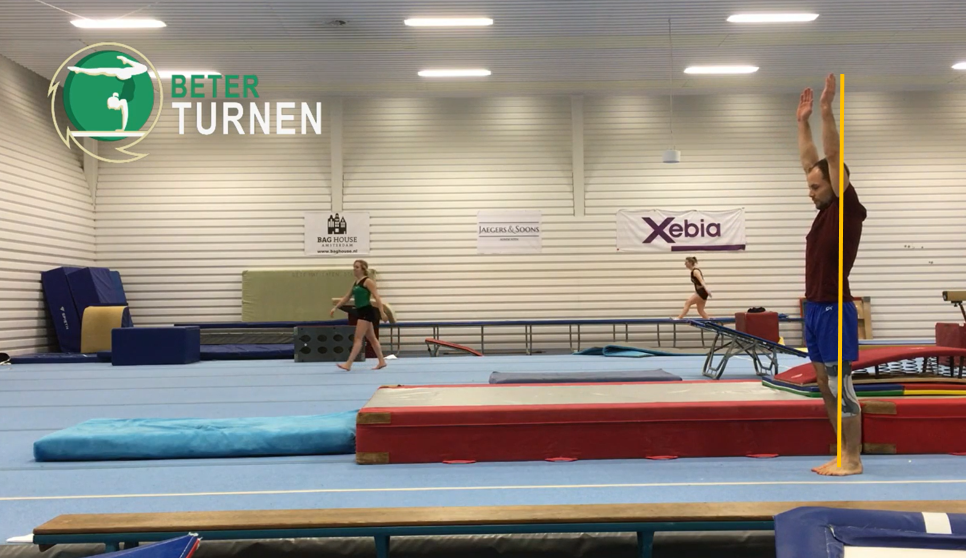 |
| Second phase | 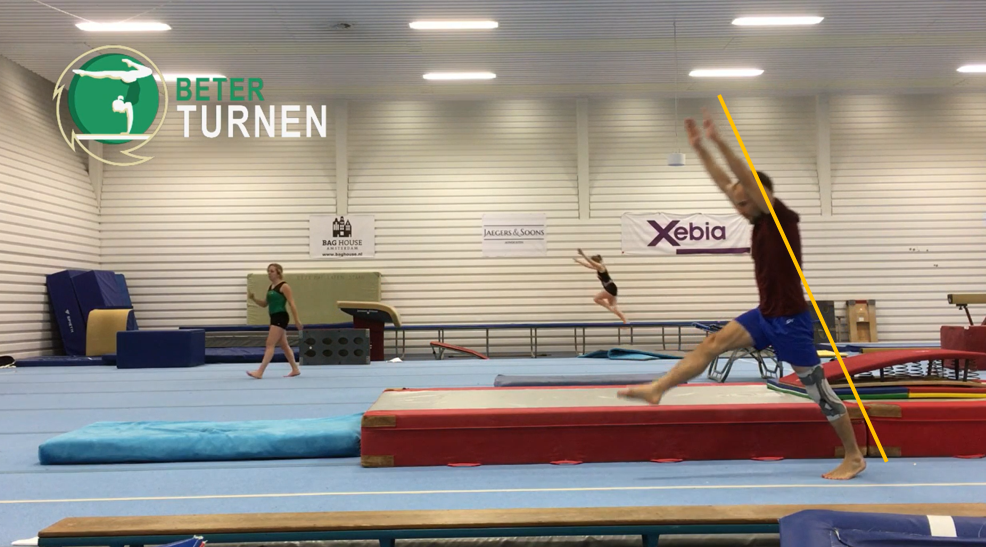 |
| Third phase | 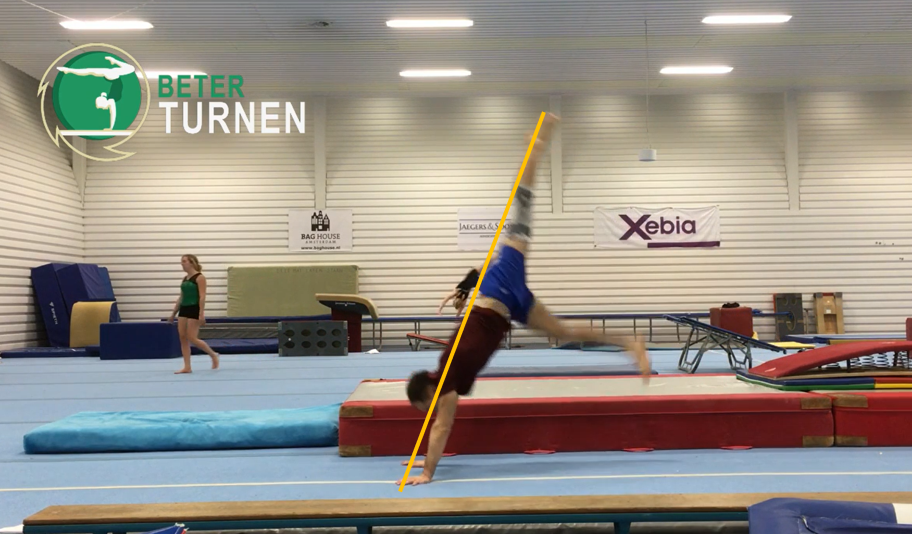 |
| Fourth phase | 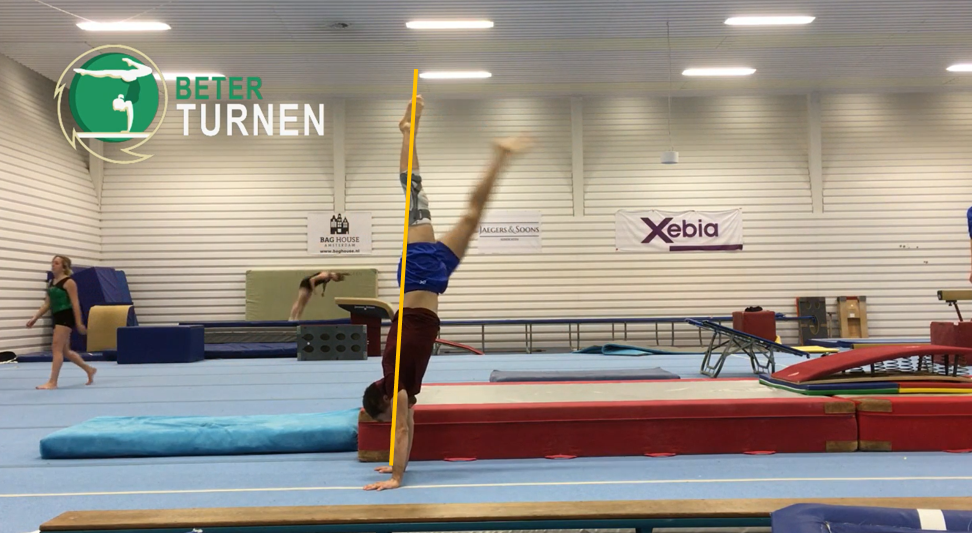 |
| Fifth phase | 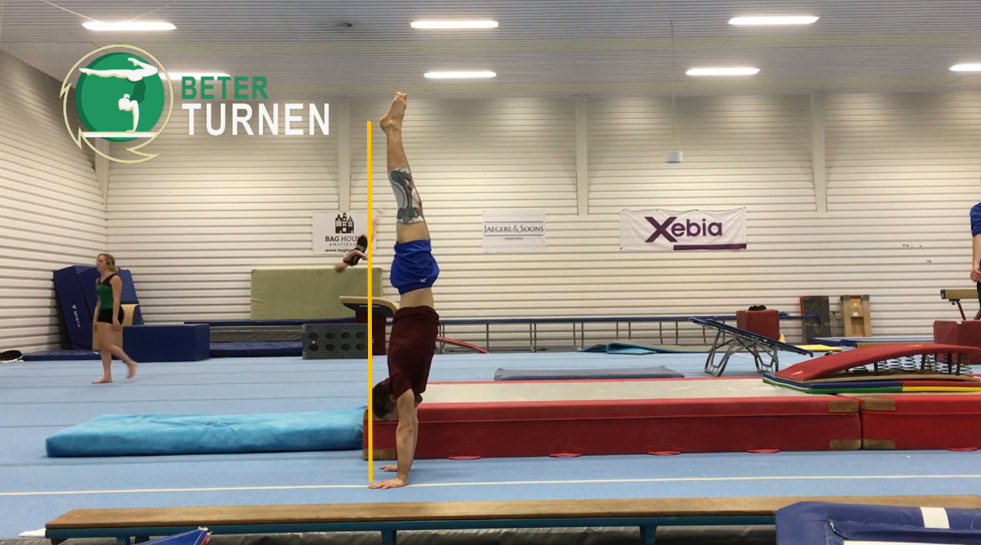 |
| Sixth phase | 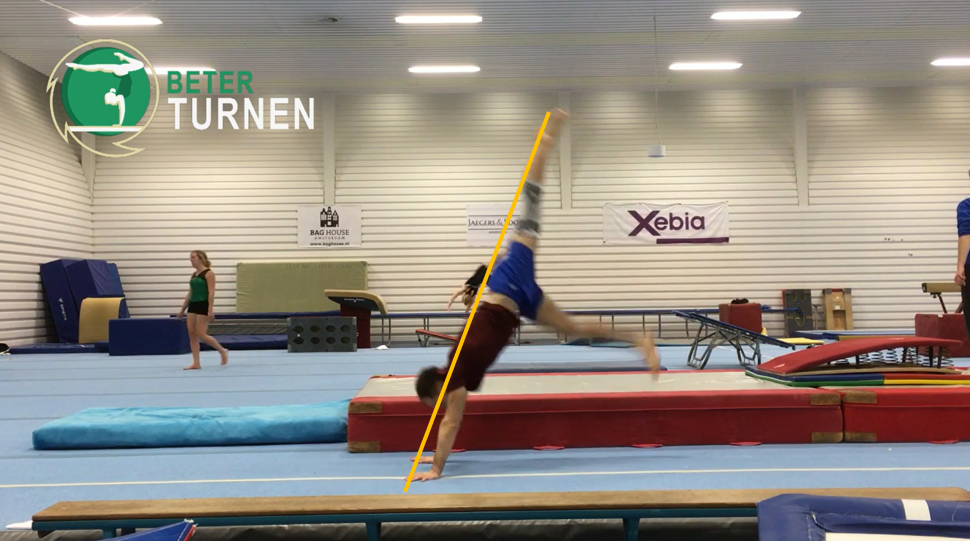 |
| Seventh phase | 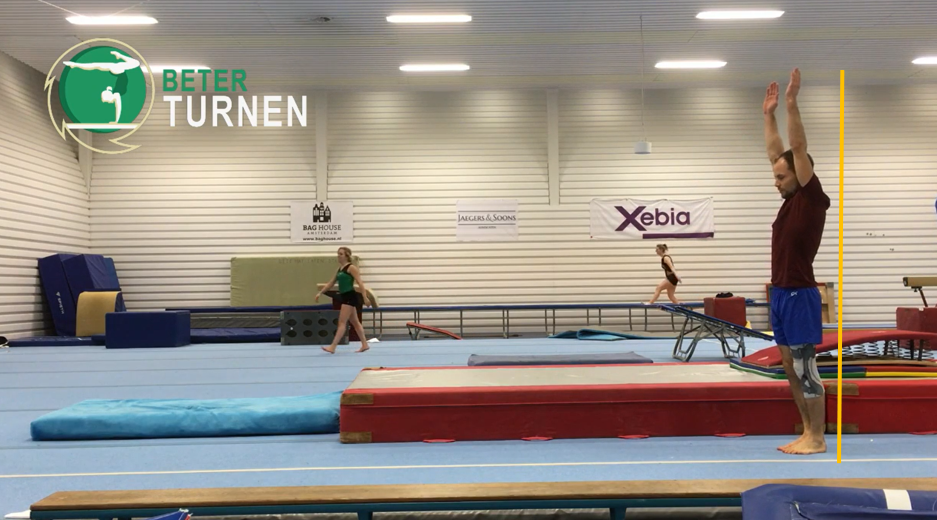 |
Lines during handstand
To perform the lines as well as possible, good form tension is required. With handstand, it is also about the form tension with the accent on experiencing to be “straight” in the legs, hips and shoulders. The legs need to be extended and closed, the hips fully stretched and the shoulder angle sufficiently opened.
In practice, I often see reduced mobility of the shoulder girdle that prevents the shoulders from opening fully. Often a gymnast compensates for this by stretching the chest. This is often paired with a hollowing of the lower back which overstretches the hips. One mistake in the chain, or that which connects the lines, can already cause a problem.
Thus, form tension exercises are incredibly important to train, when learning a good handstand. Beneath you will find many form tension exercises that are very valuable and useful.
Case study
As mentioned earlier in this article, a small mistake in the chain of exercises, that is in line play, is enough to prevent learning the correct handstand. To elucidate this even better, I will use a case study to give some examples, to learn the handstand correctly and to correct mistakes.
‘’Case Lisa”
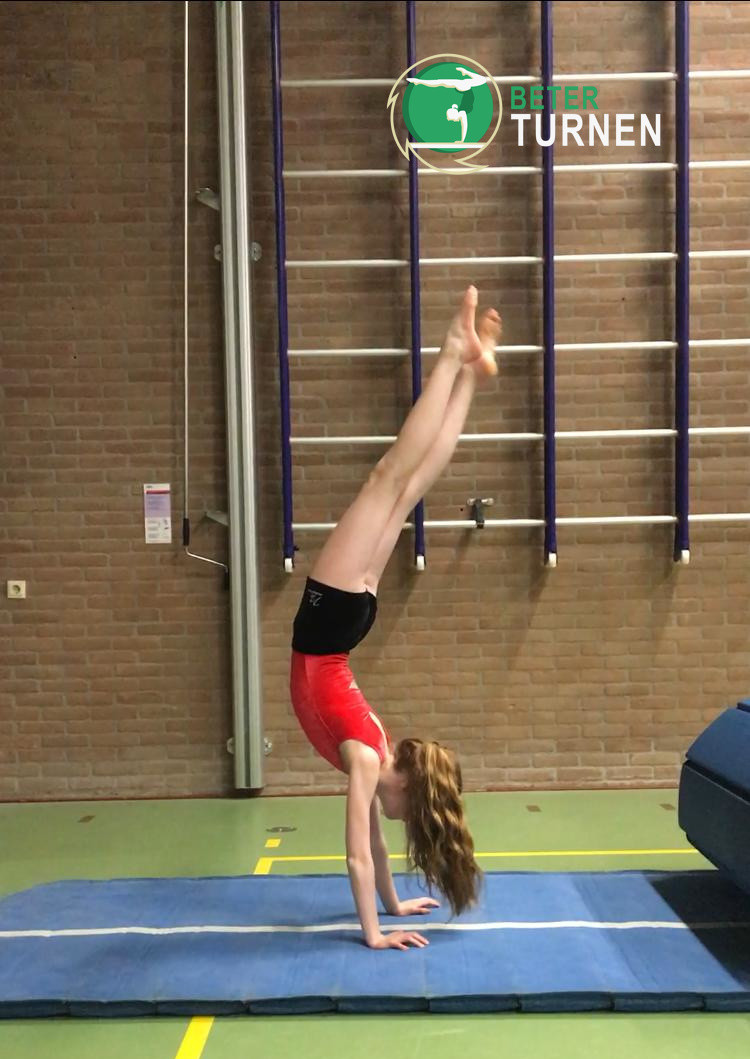
“Lisa makes as an example a handstand on the long mat. As you can see, the lines are not quite right. The shoulder angle is not fully opened, her back is somewhat hollow and her pelvis is not fully extended. These are compensations in the chain that take place to keep her centre of gravity central.”
An interesting question would be: How can these flaws be fixed? First, I would focus on increasing shoulder mobility and partial exercises to train shoulder, hip and leg tension separately. I would then want to implement these into the handstand with tips using an external focus. Then I would go on to test her ability to apply these tips in different handstand forms.
Example of shoulder flexibility
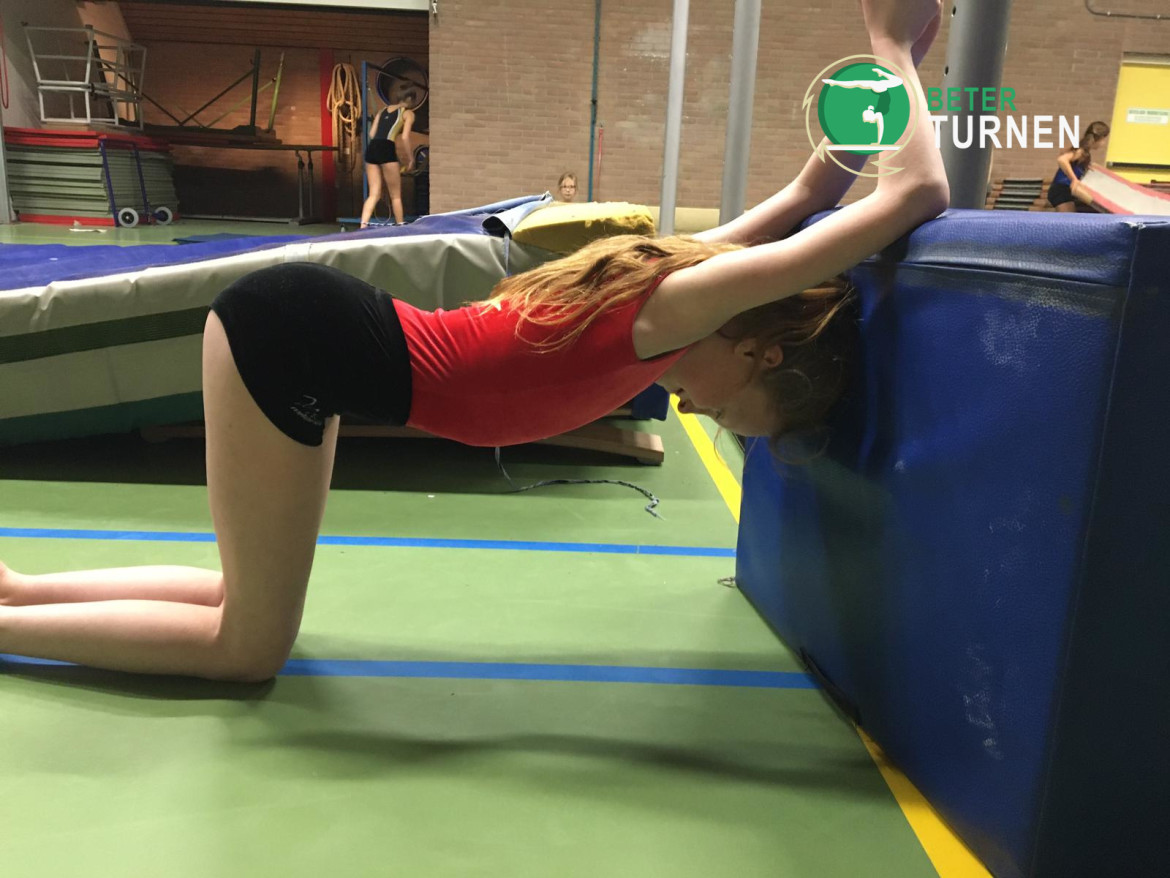
Execution: First, place the elbows on an elevation. Keep the forearms vertical (different than in the picture). Potentially use a stick to hold for this if necessary. Push the sternum down. Avoid too much arching from the lower back. The stretch should be felt from between the shoulder blades and in the armpit.
Parameters: Hold the stretch for 4 x 20 seconds
Example of shoulder form-tension
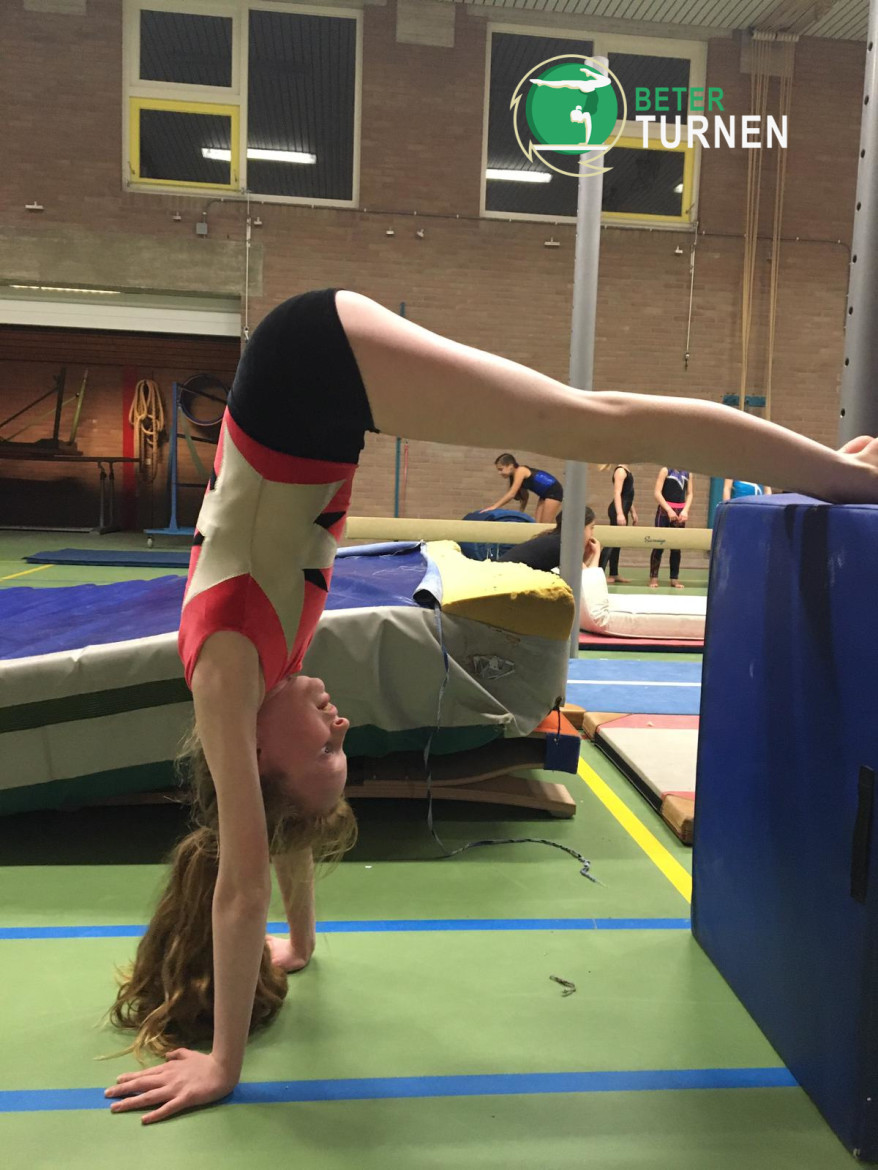
Execution: First, stand on the hands. Then open the shoulder angle completely and extend the arms fully. Make yourself as long as possible so that the shoulders are pushed out completely. You should feel this exercise, especially between your shoulder blades.
The main emphasis is on consciously holding this form of tension.
Example of hip flexion
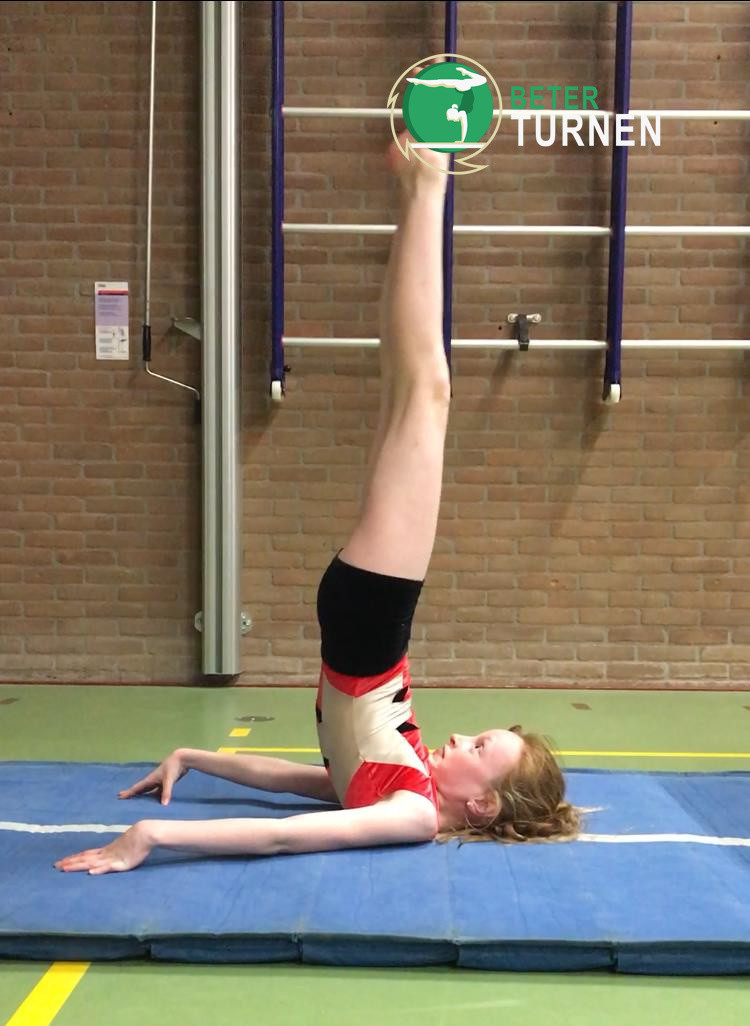
With form tension of the hips, it is important that a gymnast learns to experience how the hips are straight, hollow and round. You also emphasize the full extension of the hips in a ”straight” position.
Also, include a bit of form tension of the legs by actively squeezing the legs together. This can also be done with an external focus by squeezing an object between the knees/ankles.
The emphasis is on consciously holding this form tension.
When learning these (partial) movements, it is useful to apply an external focus. Research shows that this is the most effective learning method. If you want to know more about this read also our article about implicit learning.
External focus
These are examples of external focus in the above exercises:
- Make yourself as tall as possible (opening in hip and shoulders)
- Hold a coin between your buttocks (to promote hip and leg form tension)
- Stick your legs together with glue (form leg tension)
Handstand exercises
Now that you know how important the form tension exercises are and how to remove the most common mistakes from the handstand, it’s time to get started with the real handstand exercises! Depending on your starting level, you can either start with the handstand exercises or you can start with the “small handstand” or “spider handstand” exercises. The spider handstand is a handstand where the face is turned towards the wall. You are already practising vertical standing but in a somewhat simpler way. Below are some exercises that can be done if you are a beginner and want to learn the handstand.
Tips for practicing the handstand
- always keep your arms straight
- take a big step at the stance
- spread your fingers so you can correct yourself on the handstand
- start with exercises at your level
- do a handstand every day
Variations and additional exercises
Are you doing pretty well already, but would you like to add some variation? Or would you like to do the handstand even better, prettier and longer? Then take a look at the exercises below.
Good to know
When learning the handstand, also try to apply the lines in the different phases. In addition, try to avoid the most common mistakes with the help of these tips. Need more inspiration? Check our Handstand Playlist on YouTube!
Do you want more exercises? Check out our Youtube channel or join the Gymnastic Tools Platform and get access to all 2500 methodical exercises.
